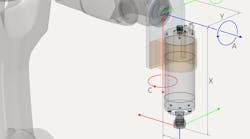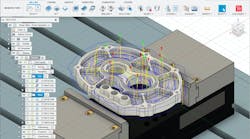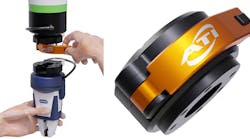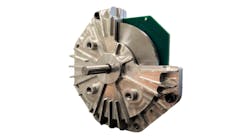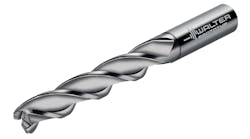SPRUTCAM TECH's Robot Calibration mobile app is designed to accurately calibrate the tool centerpoint (TCP) and automatically transfer the data to the SprutCAM X Robot program via a smartphone.
TCP calibration is a process used in robotics to determine the position of a tool relative to the robot's arm or body. This information is critical to ensuring the accuracy of the robot's movements and the precision of its tool operations. The goal of TCP calibration is to find the exact position of the tool tip, which then can be used as a reference point for the robot's motion control system. This allows the robot to consistently and accurately perform tasks such as cutting, drilling, and welding in the correct location. The calibration process typically involves measuring the positions of various points on the tool and using these measurements to calculate the position of the TCP.
The latest version of SprutCAM Tech's Robot Calibration app now supports TCP calibration for FANUC, Kuka, CRP, Denso, Dobot, Estun, Hiwin, Hyundai, Motoman, Newker, Manutec, Nachi, OTC Daihen, and Turin robots.
SprutCAM Tech’s app uses the double spikes method for calibration:
- Step 1. Measurement of the position of the long tool. The position of the tool is measured at different joint angles or at different positions along the robot path.
- Step 2. Measurement of the short tool position and automatic determination of the tool orientation.
- Step 3. Automatic recognition with OCR and reading of the data by the Robot Calibration application and calculation of TCP coordinates.
- Step 4. Transmission of TCP coordinates to MachineMaker using a QR code.
The double spikes method is a TCP calibration method used in robotic and machining applications. It consists of measuring two points on a probe and calculating the position of the tool center point based on these measurements. The purpose of TCP calibration is to determine the location of the TCP with respect to the robot's base coordinate system so that it can be accurately positioned for machining or other operations. The double spikes method can be useful in situations where the probe is unable to measure the tool position at the exact TCP.
The Robot Calibration mobile app provides SprutCAM X Robot software users with the following benefits:
• Elimination of errors caused by manual data entry.
• Reduced robot debugging time.
• No need for expensive calibration tools or services.
• Ever-growing list of supported robots and mechanisms.
• The engineer interacts with the robot using a standard smartphone.
SprutCAM Tech's Robot Calibration mobile app is available for for free download.
Learn more at www.sprutcam.com
